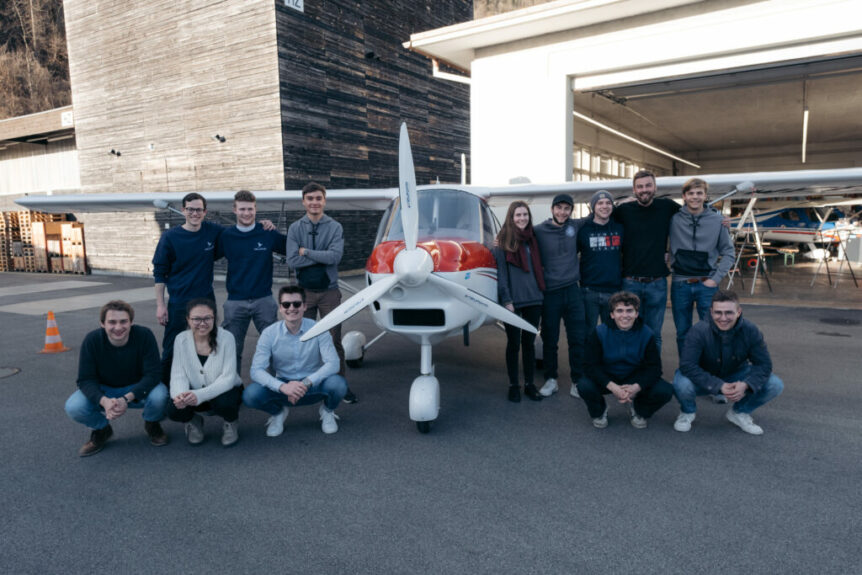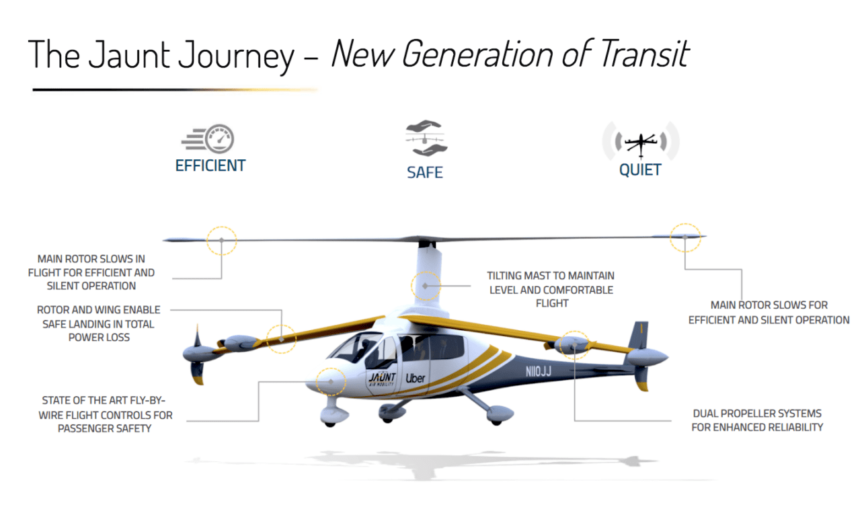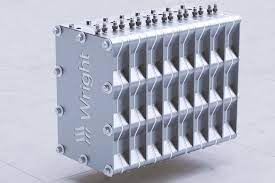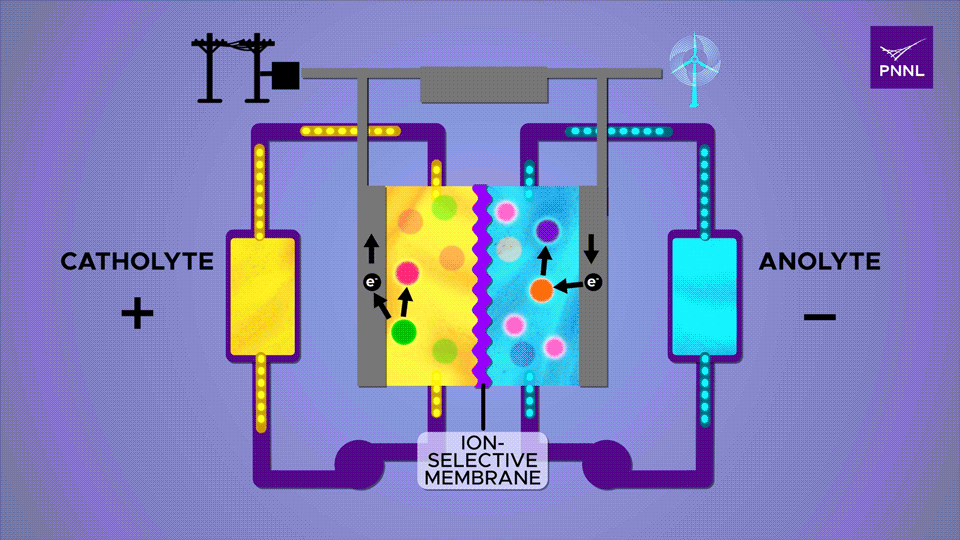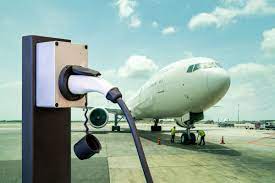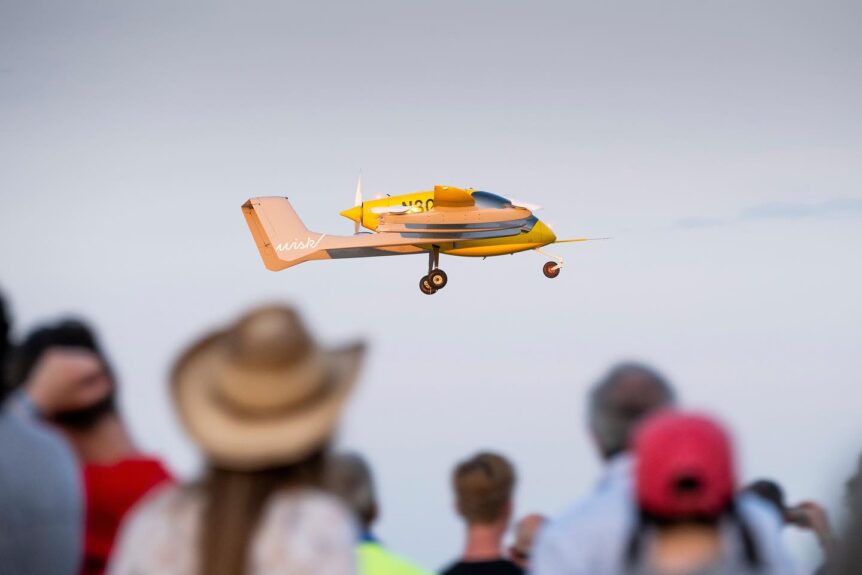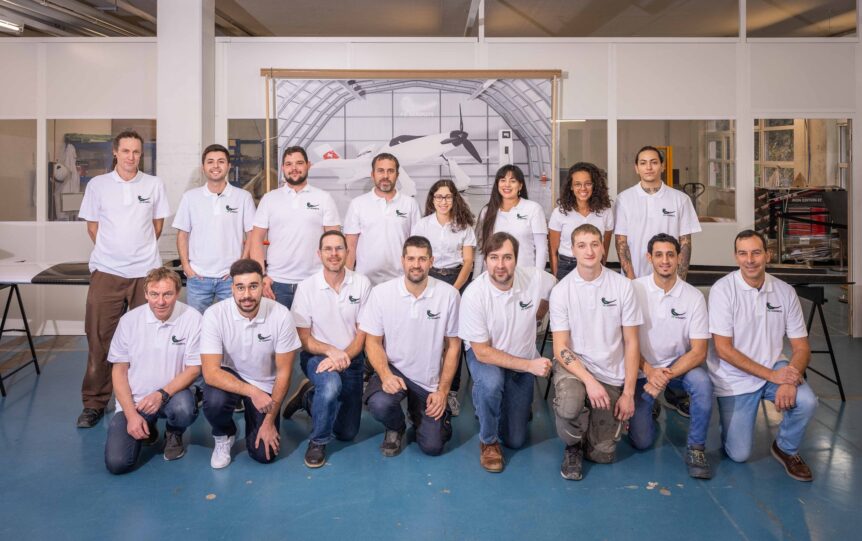The Cellsius AC4 Lightwing is a capable microlight aircraft popular in Europe. As part of a project to clean up aviation, it will fly on hydrogen, and for good distances if students at ETH Zurich* are successful in their project. Students are modifying a Lightwing to run on pressurized H2, and crafting motor, fuel system, tanks, power electronics, and battery backup system to make a coordinated, custom-fitted craft. It will stay aloft for two hours and emit nothing but water vapor. The project’s web site spells out the students’ ambitions. “Our powertrain consists of many components that together can get an aircraft into the air. “To make this a reality, we develop the majority of our components ourselves, tailored to our requirements.” Components include a radial-flux motor, unusual in that most electric aircraft motors are axial flux. Students worked with e+a (Elektromaschinen und Antriebe) AG to design and construct the unit. With that motor, students helped design a matching inverter …
Jaunt Journey – Maybe the Most Unique eVTOL
The Jaunt Journey may be the most unique eVTOL (electric Vertical Take Off and Landing) machine coming to market, and it relies on something old and several things new for its advanced take on Advanced Air Mobility (AAM). What makes it special is its combining autogiro-like technology with electric power and some different approaches to the transitions between vertical and horizontal flight. Jaunt promises to carry a pilot and four passengers 80 to 120 miles, pushing it into the realm of regional air mobility. It can top out at 175 miles per hour, or about the upper limits of most helicopters while pressing down with only 55 dBa of sound pressure, considerably below that of any helicopter. Its performance and several distinguishing features make it all the more unique. Somewhat Like an Autogiro Autogiros were pre-helicopter rotary-wing aircraft that could lift off and alight quickly because of a large, usually un-driven, series of blades above the fuselage. Note how easily …
The Wright Battery Program
Jeff Engler of Wright Electric wants it all. He wants lightweight, high-power electric motors and inverters to control them. He wants lightweight generators and now lightweight, high energy density batteries to store that electricity. He wants to meet the goal that, “By 2040, Wright will eliminate carbon emissions from all flights under 800 miles.” A more recent iteration of the company’s web site includes the goal of “Decarbonizing the industries that are hardest to decarbonize.” These would seem heady ideals but Wright Electric seems to be making steady progress toward fulfilling those goals. The Motor Their motor has been tested to 1,000 kilowatts (1,340 horsepower), with expectations that it could reach 2,000 kW (2,680 hp.). According to Aviation Week, “The motor produced 1 megawatt of peak power on a dynamometer test stand at Wright’s facility in Albany, New York. The company has signed a Space Act Agreement with NASA to test the motor in an altitude chamber at the NASA …
Ever Greater Range for Elektra Solar
A Second Win Having just come in a close second in a race against an electric car, Elektra Solar’s Trainer attained a Personal Best in range for a flight between Munich, Germany and Bern, Switzerland, a distance of 313 kilometers (194.5 miles). Calin Gologan noted the route from its home field in München Oberpfaffenhofen to Bern Airport) was highly symbolic, starting from the site where, “We founded the company (Elektra Solar) 10 years ago as a startup from the DLR Institute of Robotics and Mechatronics in Oberpfaffenhofen. We were now able to fly our aircraft purely electrically from the DLR location directly to the Electrifly-in location in Bern.” Pilot Uwe Nortmann flew in both outings, both extending the range achieved by this type of electric aircraft. As Calin points out on his Facebook page, “Last year we won this contest with a leg of about 190 km (118.1 miles). A huge progress in one year.” Looking forward to closing the …
1,000 Kilometers With an Electric Microlight
Your editor is publishing this multi-country adventure from Daniel Ramsier recounting of his 1,000 kilometer trip in an electric microlight, with some of his outstanding photographs. It’s a truly epic outing that shows ingenuity, great engineering, and a resolute spirit combined to show how much can be accomplished with a very small material involvement. The story highlights Paul MacCready’s advice to do more with much less. Regardless that it was leisurely journey, averaging 25 kilometers (15.5 miles) per day, it was still a test of Daniel’s hardihood and his craft’s reliability. Yes, it’s definitely possible to fly and travel “electric”. Taking off from Gruyère (LSGT) in Switzerland on July 15, I arrived in Kyjov in the Czech Republic in 40 days and 22 legs, invited by Marek Wolhard, a paraplegic 3-axis ultralight instructor pilot who had followed @handiflight around the world. My nano-trike was developed by Ales Hubacek of skyjam-aircraft.com in Zurich. Light and strong, made entirely of titanium, its very …
A Race Between an Elektra Solar Trainer and a Lucid Air Sedan
A race last week between an Elektra Solar Trainer and a Lucid Air sedan shows the great strides made in electrification for both cars and airplanes. Electrive.com reports, “A special race went down this week in Germany, setting an electric car against an ultra-light electric aircraft in the ‘E-Flight Challenge 2023.’” This was a relatively high-end affair, as is often true at the onset of new technologies replacing more well-established ones. The Lucid Air sedan comes in several levels of performance and trim, with the least expensive starting at $78,900. The “Pure” rear-wheel drive features a single 480 horsepower motor and is claimed to travel up to 410 miles on a single charge. In all-wheel drive form, it costs $83,900 and manages 384 miles on a single charge of its 92 kilowatt-hour battery. Pures weigh around 2,100 kilograms (4,620 pounds) A great deal lighter at around 1,332 pounds maximum takeoff weight, the Elektra Solar Trainer flies on a mere 12 …
Silicon and Sugar Make Better Batteries
Two groups of researchers in South Korea and America have added silicon and sugar as ways of gaining more energy from two different types of batteries. The 10X Battery at Last? Researchers at Pohang University of Science & Technology (POSTECH) in South Korea have developed a “layering-charged, polymer-based stable high-capacity anode material.” POSTECH professors Soojin Park (Department of Chemistry) and Youn Soo Kim (Department of Materials Science and Engineering) and Professor Jaegeon Ryu (Department of Chemical and Biomolecular Engineering) of Sogang University think their discovery could increase current electric vehicle range “at least 10-fold.” As noted in this blog many times, the idea of a 10X battery has been a matter of intense research from Yi Cui at Stanford and his research partner Jaephil Cho in South Korea, along with John Goodenough at Rice University and Jeff Dahn at Canada’s Dalhousie University – among others. Silicon and Polymeric Benders One of the bigger problems with using silicon in a battery …
Dreaming of Big Electric Airplanes: CATL and COMAC
CATL and COMAC are dreaming of big electric airplanes. The first company has made some recent battery breakthroughs, and the second has recently brought China’s biggest jet airliner to market. CATL. Contemporary Amperex Technology Ltd., is a behemoth. According to TheInformation.com, “The company spent $124 million to acquire a lithium mine in China’s Jiangxi province, an operation that would feed into a $2.1 billion battery factory it was building nearby. And in October, it spent $3.6 billion to buy 25-percent of a cobalt operation in the Democratic Republic of Congo. This year, CATL has spent $1 billion on a lithium brine operation in Bolivia, $885 million for lithium rights in China’s Xinjiang province and $920 million for lithium rights in the Chinese province of Sichuan.” This globe-girdling spate of acquisition indicates the seriousness of China’s move to dominate world battery markets. With recent news of CATL’s 500 Watt-hour-per-kilogram cells and their possible use in large aircraft, the need to compete …
Wisk Wows at Oshkosh
A Wisk Cora flew autonomously several times along the length of the 8,002-foot main runway, a first at the Experimental Aircraft Association’s 2023 AirVenture in Oshkosh, Wisconsin. The July 25 event was, “The first-ever public demonstration of a fully autonomous eVTOL fixed-wing airtaxi,” according to the company. Under development and appearing in different configurations over the last several years Wisk’s aircraft have flown in Hollister, California and in New Zealand. Cora represents the fifth generation of such vehicles. Wisk, a Boeing partner, is not stopping there. The flight from another perspective, with an explanation of the noise on the soundtrack: “The noise is the 787 APU, not the @WiskAero. ‘ Note how the noise drops as the auxiliary power unit shuts down, with crowd noise competing with the Cora for dominance. https://twitter.com/i/status/1684023361804943360 A Future with Four Seats The latest iteration for the firm is their sixth-generation craft, simply called Generation Six. It’s a four-seater, with ample room for passengers and …
Pie in the Swiss Sky
Pie Aeronefs is a small firm in Switzerland, specializing in battery-powered aviation, and close to flying its single-seat air racer, the UR-1 Devil. We reported on this machine in 2021 at an early stage in its development, and now it’s going to be available as a kitplane. Adding to a bumper crop, their UG-2 Bullfinch will also be available as a kit. Pronouncing that their aircraft are all zero-emissions machines, Swiss made, and innovative, Pie Aeronefs has this manifesto on its home page: “Pie Aeronefs is a Swiss all-electric aircraft manufacturer. “Through distributed electric propulsion, our zero carbon emitting airplanes shall surpass the performance of conventionally powered competitors. “Thanks to an innovative design, our aircraft are optimized for the electric energy system.” UR-1 Devil Supplied as a kit that the company says can be completed in 800 hours, the racer features carbon, aluminum, wood and electronics components, and “access to all technical data and assembly diagrams.” Customers have to supply …

